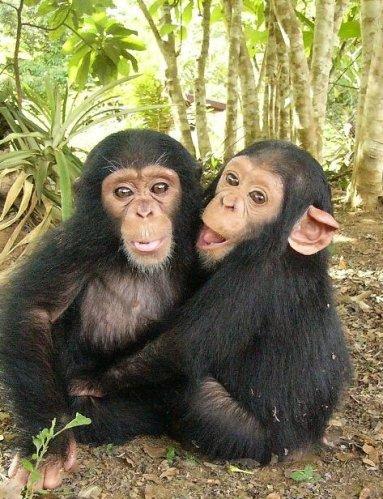


There was no association between dietary composition and distances among fecal samples, suggesting that chimpanzees have access to and largely use the same set of plant species over the entire study area. The consumption of fruit species increased with ripe fruit availability, but a few wild fruit species were selected disproportionately to their overall availability. Fecal samples ( N = 210) were dominated by wild species (82 % volume), while cultivated species were rare (0.9 % volume 17 % volume of unidentified species). Chimpanzees showed a fruit-based diet composed of 31 identified plant species. More fruits were available in the dry than in the wet season, and ripe fruit availability peaked in the late dry season. We collected phenological data from March 2011 to February 2012 by sampling focal plant taxa and conducted macroscopic analyses of fecal samples and feeding remains during the dry season (February–May and October–December) of 2011. We also investigated spatial variation in dietary composition. We assessed intraseasonal variation in dietary composition and diversity of the western chimpanzee ( Pan troglodytes verus) at Lagoas de Cufada Natural Park, Guinea-Bissau, a forest–savannah mosaic disturbed by humans, in relation to food availability. "And even in our own lives, we may have underestimated the importance of same-sex bonds and friendship.Nonhuman primate populations are facing widespread conversion of their habitat to human-modified landscapes dominated by agriculture, in which cultivated species may constitute alternative food resources, particularly during periods of wild food scarcity. "This raises the possibility that romantic love in humans finds its origin in same-sex friendships of apes," Sandel said. Sandel proposes that same-sex attachments such as those seen among chimpanzees existed in our species prior to the emergence of opposite-sex pair bonds with mates. Previous research may have failed to categorize such behaviors as indicative of pair bonding, Sandel said, because chimpanzees also engage in social behaviors with non-partners in their larger social groups, similar to how humans form friendships with both their mates and others in their communities. Several indicators of emotional connection can be observed in same-sex relationships between male chimpanzees, including evidence of reduced stress levels, behaviors specific to interactions with that partner, and possibly jealousy if a partner engages in grooming activities with individuals outside the pair. But what if pair bonds do occur in some of our ape relatives, and we just overlooked them?"

"So biological anthropologists have assumed that whatever led to pair bonds in humans must have something to do with other uniquely human traits, such as walking upright, or having infants with huge brains, or hunting, or making fire. "Part of the evolutionary puzzle is that our closest living relatives, the great apes, including chimpanzees and bonobos, do not form enduring bonds with their mates," Sandel said. Chimpanzees, humans' closest relative, do not pair bond with their mates, but adult males of the species form same-sex bonds lasting as long as 13 years. In a paper published in the journal Evolutionary Anthropology, anthropology professor Aaron Sandel cites primate research-including his own decade-long studies of chimpanzees in Kibale National Park, Uganda-to propose instead that this behavior evolved in humans from same-sex pair bonding already present in a common ancestor of humans and chimpanzees.Ī pair bond is a cooperative relationship between nonrelated adults that remains stable over time and includes an emotional connection, rather than being merely transactional. The prevailing explanation of heterosexual pair bonding and romantic love in humans is that it evolved from the mother-infant bond present in many mammals.


 0 kommentar(er)
0 kommentar(er)
